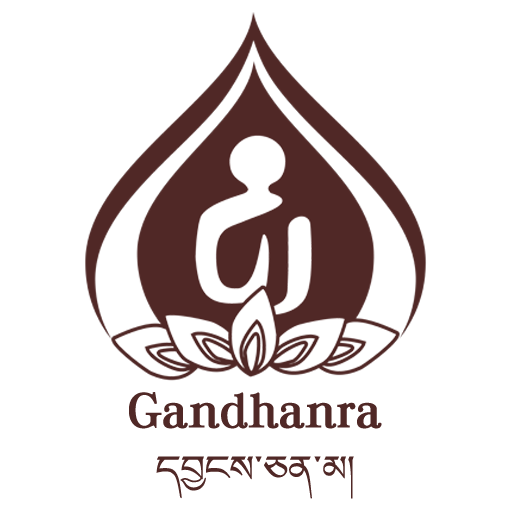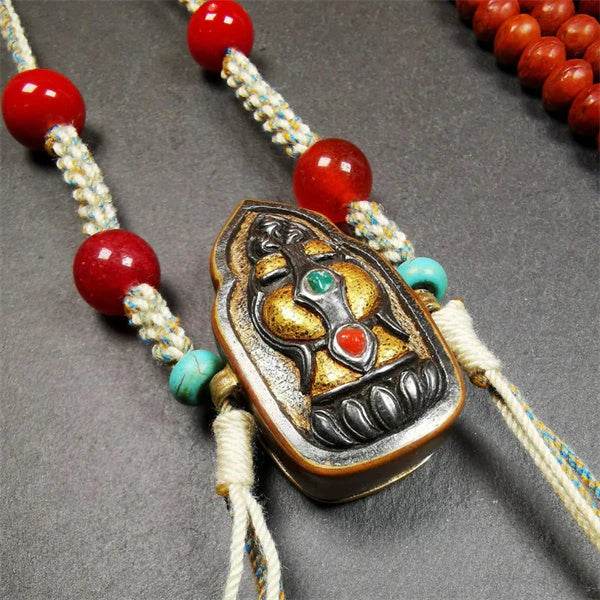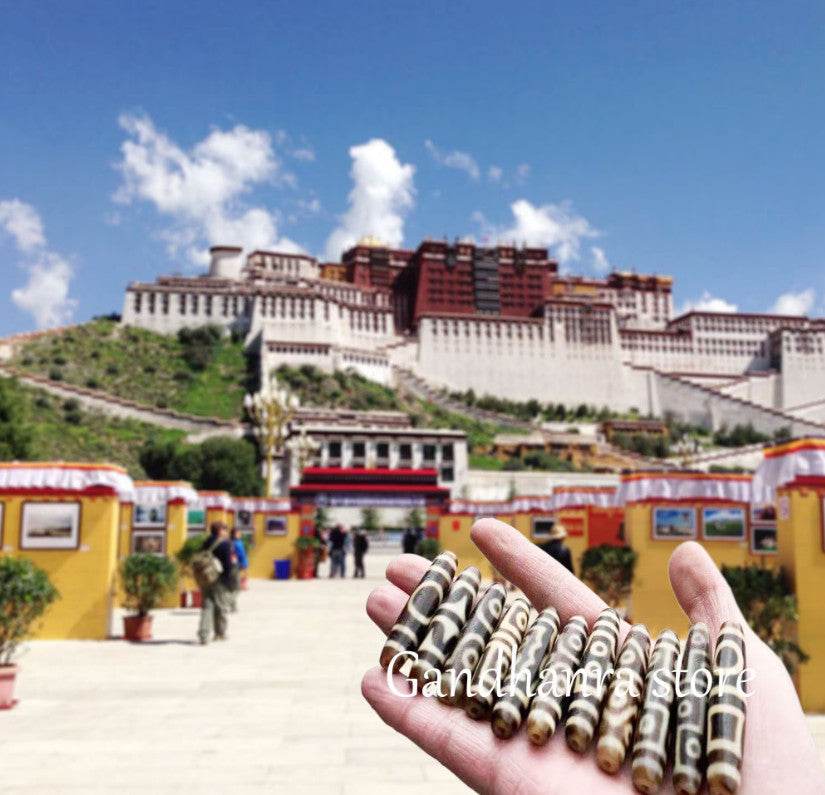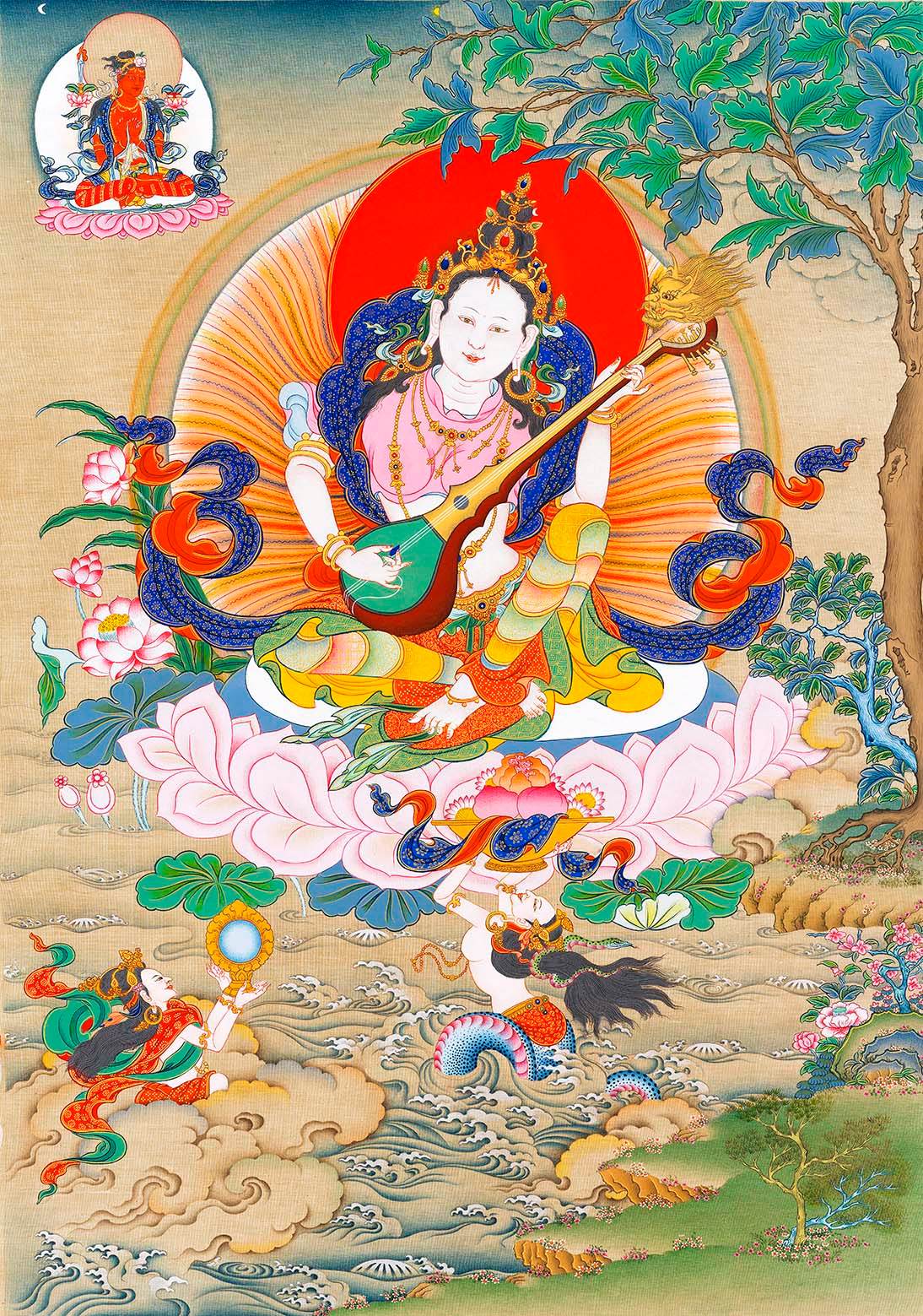
The first Tibetan woman in history to marry a British man.

Photo from Rinchen Lhamo's 1926 book
Image source: wikipedia
The first Tibetan woman to settle in the UK, break British-Chinese Tibetan marriage records, and promote Tibetan culture through English-language books.

Illustration from the book: Farmhouse
Image source: Kongfz.com

Illustration from the book: Castle
Image source: Kongfz.com

Illustration from the book: Monastery
Image source: Kongfz.com

Illustration from the book: Coracle
Image source: Kongfz.com

Illustration from the book: Palace and Village
Image source: Kongfz.com
Text source: "Tibetan Customs and Culture" by Rinchen Lhamo
The first recorded British-Chinese Tibetan marriage in history.
"I am a Khamba woman, from the populous eastern region of Tibet. My husband is an Englishman, who once served as a British diplomat in Tibet, China." This is the opening sentence of the preface to the book "Tibetan Customs and Culture." Published in London in 1926, the book was written by a 25-year-old Tibetan woman, Rinchen Lhamo. With this work, she became the first Tibetan woman to introduce Tibetan culture in English to the Western world.

Photo from Rinchen Lhamo's 1926 book
Image source: wikipedia
On August 18, 1901, Lhamo was born into a prestigious chieftain family in Kangding, Sichuan (དར་རྩེ་མདོ་རྫོང་།). Around 1919 to 1922, she met her life partner: Louis Magrath King, a British diplomat to China, abbreviated as Jin Luyi.

Louis Magrath King
Image source: Kongfz.com
King was born in Jiujiang, Jiangxi. His grandfather was a Scottish missionary, and his father worked in the Chinese Maritime Customs Service. When he met Lhamo, King was a consul stationed in Kangding, China. During his second posting to Kangding, they became acquainted and grew to love each other through their time together.
However, they also faced various difficulties due to their different lifestyles and cultural clashes. To legalize their marriage, King resigned from his consular duties, and the two officially married in 1923. This is considered potentially the first recorded British–Chinese Tibetan marriage in history.

Rinchen Lhamo and Louis Magrath King
Image source: Tim Asquith
"Tibetan Princess"
In 1925, King and Lhamo boarded a Japanese ship and sailed across the ocean to the United Kingdom, where they settled in the areas of Kensington and Hildenborough. Upon their arrival in Britain, they quickly attracted keen attention from various British media outlets. Her image, dressed in both Tibetan attire and Western clothing, along with interview articles, was published in numerous newspapers. However, what particularly frustrated the couple was that many reports, aiming to attract readers, labeled her with the title "Tibetan Princess."
Lhamo was not the first Tibetan to arrive in Britain, but she can almost certainly be regarded as the first Tibetan woman from China to marry a British man and likely also the first to settle in the UK for life. Such a cross-cultural relationship was especially captivating at the time.

British media coverage of Rinchen Lhamo
Image source: eccentricparabola.blogspot
 A cantilever bridge in Tibet
A cantilever bridge in TibetImage source: Kongfz.com
 Tibetan nomads
Tibetan nomads Image source: Kongfz.com

View of the Nujiang Canyon
Image source: Kongfz.com
In short, when you open this book, I hope you do not see it as a detailed and exhaustive introduction to Tibet. I want to use this book to share our perspectives on various matters. It is a very simple story, and the only thing I can do. This is a record of my thoughts as an ordinary Tibetan woman—about my birthplace, Tibet, China, and my married home, Britain.

Isolated primitive people
The preface concluded with Linchen's married name, Rinchen King. After its publication in London in 1926, the book attracted a large readership in Europe, allowing people to gain a better understanding of Tibet. Moreover, the entire book used the first-person pronouns "we" and "you" to represent "Tibetan people of China" and "British/Western people" respectively, drawing sharp contrasts between the two based on Lhamo's own life experiences in Tibet and the West.
For example, "Physically, Tibetans and the British are almost equal in stature, with individuals over 6 feet (180 cm) being quite common in Kangding. The climate there is excellent, the air is fresh, and the natural scenery is unparalleled. This aligns perfectly with the character of Tibetans—easygoing and kind-hearted. Sunlight forever bathes the land there, as well as the depths of the Tibetan people's souls."

Three Tibetan leaders
Image source: Kongfz.com
We are healthy in body and mind, with skilled and dexterous hands, but our work differs from yours. Tibetans cultivate land or herd livestock on open farms and pastures, without commercial or industrial systems like those here, and unlike people here, we do not undertake engineering projects indoors. We do not live by fixed schedules, nor do we rush or feel anxious. Instead, we have more time to do what we wish, and we approach many things with equanimity.

Trade in Tibet
Image source: Kongfz.com
We are not, as some of you claim, a group of primitive people living in isolated places. We are neither primitive nor peculiar. Just like you, we are a people with a highly developed material and spiritual culture.

Religion in Tibet
Image source: Kongfz.com
Christian cemetery
On November 22, 1929, Lhamo's funeral was held at St. John's Church. The Tonbridge Free Press reported as follows: "On Saturday, in a Christian cemetery, rests the first Tibetan lady from China to live in Britain—Rinchen Lhamo, wife of Louis Magrath King, a British diplomat to China. She passed away due to illness last Wednesday (referring to November 22, 1929) at the age of 28."

Rinchen Lhamo's grave
Image source: Tim Asquith
She was the daughter of a chieftain. Mr. King met her during his tenure as a consul in Tibet. They married over a decade ago and first came to Britain in 1925. Her arrival attracted widespread attention and interest among the local people. They later settled in Hildenborough. In 1926, Lhamo published a book titled "Tibetan Customs and Culture," which won the affection of many readers. The funeral on Saturday was presided over by Rev. L.G. Chamberlen.

Rinchen Lhamo's Grave
Image source: Tim Asquith
Twenty years after her death, King's remains were also buried beside her. They initially lived in Kensington before moving to the countryside of Hildenborough. Their home, known as "The Yews," was a tranquil piece of land, which to this day remains surrounded by rows of tall old oak trees, as if guarding the memories of their unique life together.

Old barn in Hildenborough
Image source: Tim Asquith
Gem Goddess
Lhamo's brother, Nangkha Danrub, accompanied them to the United Kingdom, where he studied engineering. He returned to the Kham region between 1932 and 1933. Another report mentioned that Nangkha converted to Christianity during his stay in the UK.
However, despite marrying a British man, Lhamo did not abandon her Buddhist faith. Although she had a tombstone erected in accordance with Western traditions, her Tibetan name—Rinchen Lhamo—was clearly inscribed on it. Additionally, she and King had four children together. Their eldest daughter, Irene Louise Yudre King, was given the Tibetan name Sherab Drolma.

Rinchen Lhamo and her daughter
Image source: eccentricparabola.blogspot
British writer Tim Chamberlain noted: "Like some great figures, her personality was somewhat shy and nonconformist, but to those within her circle of friends, she was a devout Buddhist—graceful in demeanor, unshaken by anything, and possessing a unique insight into human nature. If she can be taken as a representative of her people, then this nation must possess some precious qualities yet to be discovered."
Just as her name "Gem Goddess" suggests, Lhamo was a remarkable woman of the 20th century. She lived a brief yet radiant life and held multiple titles: the first Tibetan woman from China to settle in the UK, the first to break the record of British–Chinese Tibetan marriage, and moreover, the first Tibetan woman to introduce and promote Tibetan culture through English-language publications.
As she herself said, "My life has not been ordinary." Indeed, Lhamo's life was extraordinary. Having left her homeland, she virtually became the "Tibetan spokesperson" for China in the West during her era. She secured a rightful image for her people and concluded her own life with an "extraordinary" ending.

Cover of the book by Rinchen Lhamo
Image source: amazon








